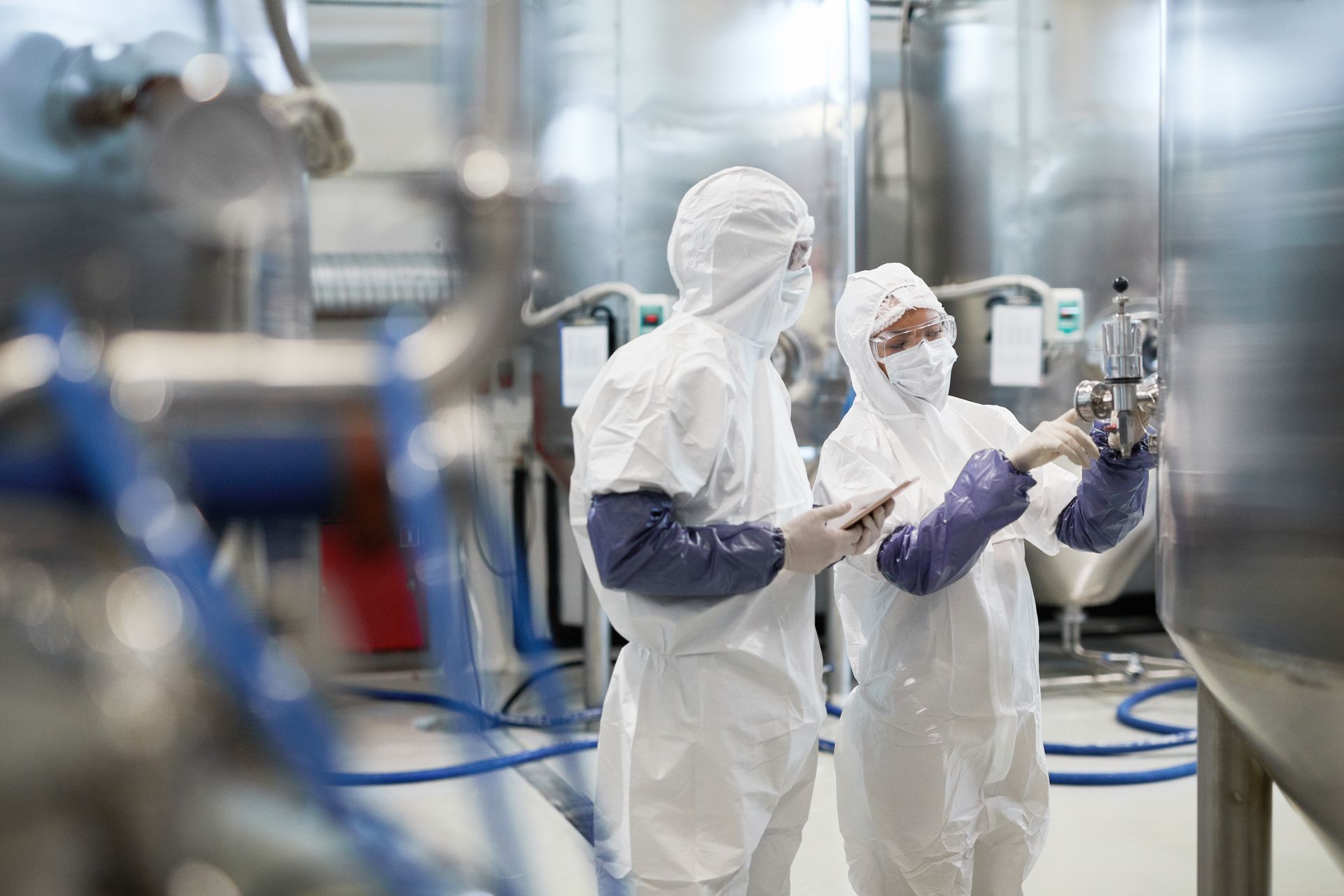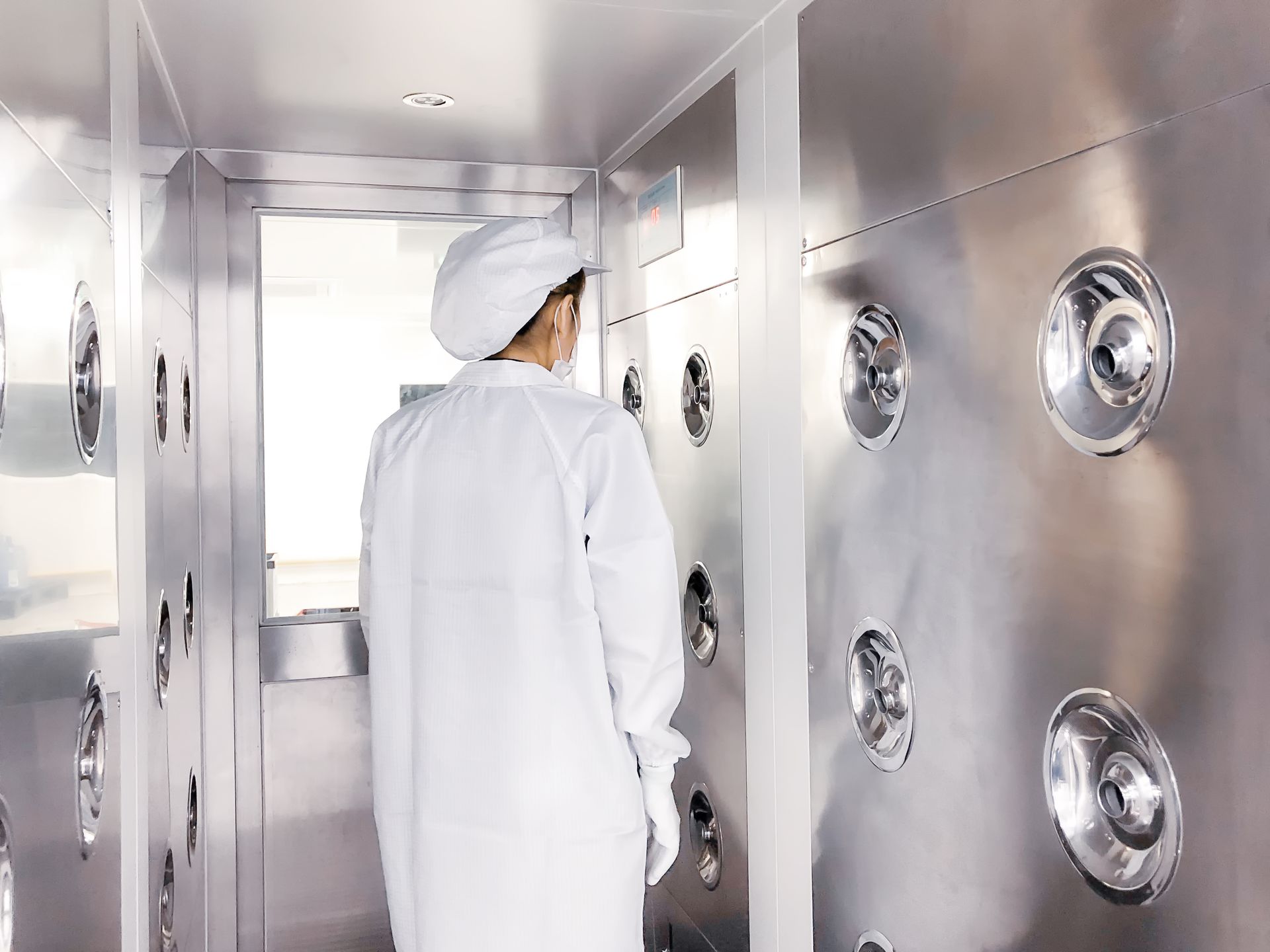By Kjeld Lund October 10, 2025
•
October 10, 2025
The Differences Between USP and ISO Cleanrooms Cleanrooms are critical for industries that require a controlled environment to maintain product quality, safety, and compliance with strict regulatory standards. These environments are carefully designed to minimize contamination, whether from particles, microorganisms, or chemicals, and to ensure that the products or processes within the cleanroom meet the highest standards. Two of the most recognized standards for cleanrooms are those established by the United States Pharmacopeia (USP) and the International Organization for Standardization (ISO) . While both aim to ensure cleanroom environments are effective in controlling contamination, they have distinct differences in their approaches, guidelines, and applications. This article will delve into the key differences between USP and ISO cleanrooms, explaining the scope of each standard, the classification systems, and the specific applications in various industries, particularly in pharmaceuticals, biotechnology, medical devices, and other sensitive manufacturing processes. What is USP Cleanroom Standard? The United States Pharmacopeia (USP) is a nonprofit organization that sets standards for the quality, purity, strength, and consistency of medicines, food ingredients, and dietary supplements. USP standards are widely recognized in the pharmaceutical industry and are legally enforceable in the United States. USP cleanroom standards are primarily concerned with ensuring that cleanrooms used for the manufacturing, packaging, and compounding of pharmaceuticals meet the required levels of cleanliness and sterility to prevent contamination during production. USP standards are outlined in USP Chapter <797> , which provides guidelines for pharmaceutical compounding, and USP Chapter <800> , which deals with the handling of hazardous drugs. These standards are mandatory for any pharmaceutical manufacturing and compounding processes in the U.S. What is ISO Cleanroom Standard? The International Organization for Standardization (ISO) is a global body that sets international standards across various sectors. For cleanrooms, ISO standards are found in the ISO 14644 series, which is recognized and used worldwide. ISO 14644 provides a comprehensive framework for cleanroom design, operation, and performance, focusing on airborne particulate contamination. ISO cleanroom classifications are used globally across multiple industries, including pharmaceuticals, biotechnology, semiconductor manufacturing, aerospace, and medical devices. The ISO 14644-1 standard defines the classification of cleanrooms based on the concentration of airborne particles, whereas ISO 14644-2 provides guidance on the monitoring of cleanrooms. Key Differences Between USP and ISO Cleanrooms Though both USP and ISO standards aim to maintain a controlled environment, their approaches differ in several key areas. Here are the main distinctions between USP and ISO cleanrooms: 1. Purpose and Scope USP Cleanrooms : The USP standards are primarily intended for pharmaceutical compounding and manufacturing processes in the United States. USP cleanrooms focus on ensuring the safety, sterility, and contamination control of pharmaceuticals and medical products during their manufacturing and packaging. This includes guidelines for compounding sterile preparations and protecting patients from potential contamination through improper compounding or packaging. ISO Cleanrooms : ISO standards are internationally recognized and are applicable across multiple industries, not just pharmaceuticals. They provide a broader approach to cleanroom classification and contamination control. ISO 14644 is applicable to industries such as aerospace, biotechnology, semiconductor manufacturing, and medical device production, which require strict environmental control to maintain the integrity of their products. While pharmaceutical cleanrooms may follow both USP and ISO standards, ISO standards are used more universally across different sectors. 2. Cleanroom Classification System USP Cleanroom Classification : USP classifies cleanrooms into different types based on their specific purpose and the required level of contamination control. The cleanroom classification system in the USP is more specific to pharmaceutical and medical applications and is not as comprehensive as the ISO classification system in terms of particle measurement. It emphasizes the sterility and safety of the pharmaceutical products being compounded, with less focus on particle counts and airborne particles in comparison to ISO. USP <797> defines Category 1, Category 2, Category 3 , and Category 4 cleanrooms for different compounding levels, ranging from simple non-sterile compounding to complex sterile compounding, with specific guidelines for each category. ISO Cleanroom Classification : The ISO 14644-1 standard divides cleanrooms into classes based on the concentration of airborne particles of specific sizes, such as 0.1 μm, 0.2 μm, and 0.5 μm. The ISO classification system ranges from ISO Class 1 (the cleanest) to ISO Class 9 (the least clean). This classification system is widely used across industries like semiconductor manufacturing, aerospace, and medical devices, where precise particulate control is essential. The ISO system takes a more granular approach to cleanliness, focusing on airborne particles to ensure consistent environmental quality. 3. Measurement and Monitoring USP Cleanroom Standards : The USP guidelines emphasize contamination control but are more focused on the sterility of the environment. The USP Chapter <797> guideline for sterile compounding specifies the use of air quality tests (e.g., settle plates, active air sampling) and microbial testing to ensure that a cleanroom meets the necessary sterility requirements. It also stresses the importance of visual inspection, proper training, and procedure compliance to maintain cleanroom conditions. ISO Cleanroom Standards : ISO 14644-2 focuses more rigorously on continuous monitoring of particulate contamination. ISO cleanrooms are subject to regular air sampling and particle count testing to determine if they meet the required cleanliness standards. ISO 14644-1 defines limits for particle counts per cubic meter of air for different sizes of particles. Additionally, air quality is tested based on both the static and dynamic conditions in the cleanroom. Monitoring equipment, such as laser particle counters, is employed to measure the airborne particles, and stringent protocols are followed to ensure that the air quality is consistently maintained. 4. Focus on Environmental Control USP Cleanrooms : USP cleanrooms place a heavy emphasis on maintaining a sterile environment to ensure the safety and sterility of pharmaceutical products. While USP standards require cleanrooms to meet specific temperature, humidity, and airflow conditions, the focus is primarily on the compounding process and ensuring that the environment is free from microbial contamination. The guidance typically includes specific protocols for gowning, hygiene, and handling of materials to avoid contamination. ISO Cleanrooms : ISO standards are much broader in their focus on environmental control. In addition to particulate contamination, ISO standards place emphasis on factors such as air pressure, temperature, and humidity. ISO 14644-4 provides guidelines for the design, construction, and operation of cleanrooms, ensuring that systems are in place to control airflow, filtration, and pressure differentials. Airflow design (e.g., laminar flow) and system performance are closely monitored and controlled under ISO standards to guarantee that cleanrooms meet their specified classification. 5. Applicability Across Industries USP Cleanrooms : The USP cleanroom standards are primarily aimed at pharmaceutical and medical device manufacturing, especially in the United States. USP standards are mandatory for U.S.-based pharmaceutical manufacturers, and compliance is necessary for meeting FDA regulations. However, their scope is somewhat limited when compared to ISO standards, as they are focused on pharmaceutical production and not the broader range of industries that require cleanrooms. ISO Cleanrooms : ISO cleanrooms are used globally across a wider range of industries, including pharmaceuticals, biotechnology, semiconductor manufacturing, aerospace, medical devices, and electronics. ISO standards are applicable in environments where contamination control is critical to product integrity, regardless of geographic location. This global applicability makes ISO standards the most widely accepted and recognized framework for cleanroom design and classification. 6. Sterility vs. Contamination Control USP Cleanrooms : The USP guidelines, particularly in USP Chapter <797> , focus heavily on maintaining sterility . For pharmaceutical manufacturing, sterility is a key requirement, and cleanrooms are designed to ensure that compounded drugs remain sterile throughout the process. This involves strict protocols on air quality, gowning, and hygiene procedures to eliminate the risk of microbial contamination. ISO Cleanrooms : While sterility is also a focus in many ISO-classified cleanrooms, ISO standards are more concerned with overall contamination control , particularly particulate contamination. This includes the management of airborne particles and environmental conditions such as temperature and humidity, which may not be addressed in the same detail by USP. ISO standards are applicable across industries where contamination control may not always involve sterility but where particulate control is critical. Conclusion While both USP and ISO cleanrooms share the common goal of maintaining a controlled environment to ensure product safety and integrity, they serve different purposes and have distinct standards and methodologies. USP cleanrooms are primarily focused on the pharmaceutical industry, emphasizing sterility and contamination control during compounding and manufacturing. In contrast, ISO cleanrooms are applicable across multiple industries, with a broader focus on particulate contamination control and environmental management. The key differences lie in their scope, classification systems, and focus areas, but both sets of standards are crucial for ensuring that cleanroom environments meet the necessary requirements for product quality, safety, and regulatory compliance. Understanding these differences is vital for businesses operating in industries that rely on cleanrooms, helping them navigate the regulatory landscape and adopt the appropriate standards for their specific needs. Read more: All About Cleanrooms - The ultimate Guide







